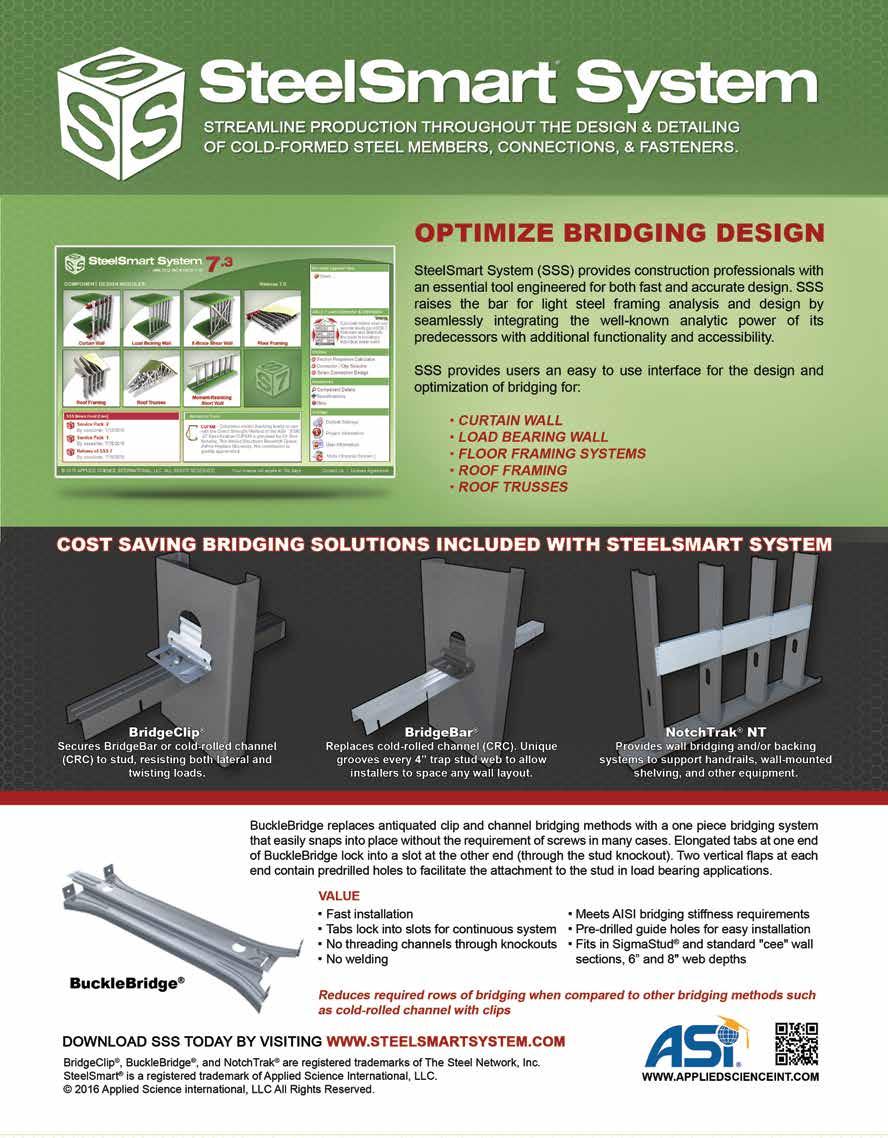
4 minute read
STRUCTURAL FORUM
Learning from Disasters
By Jessica Mandrick, P.E., S.E., LEED AP
Natural disasters devastate communities, destroy structures, halt livelihoods, and take lives. With each event, engineers aim to improve our practices to lessen the impact of future incidents. Reconnaissance trips following natural or manmade disasters can provide a valuable education. As a young engineer, I have had the opportunity to work in three areas following natural disasters, exposing me to collaboration among disciplines, foreign codes and practices, new research, damage to structures at full scale, and the consequences of our designs. As an undergraduate in 2005, I met researchers from Louisiana State University. These scientists presented on the erosion of coastal Louisiana due in part to the extensive levees historically placed along the length of the Mississippi River in response to river flooding. The levees reduce the amount of sediment entering the Mississippi River and channel what sediment is in the river off of the continental shelf into deep water, rather than onto the delta where it could build land. The loss of this land is the loss of a significant storm buffer between New Orleans and the Gulf of Mexico. The researchers stressed an urgent warning that just months later became a reality with Hurricane Katrina. Nine months after the event, I returned to work with this same group of scientists. Houses and neighborhoods still lay abandoned, while the team worked on modeling strategies for river diversions (opening up areas of levees) to build land in the Mississippi River Delta. More than ten years later, the conversation about abandoning the bird’s foot delta and allowing the release of sediment is ongoing. The experience highlighted the risks of interfering with nature on a large scale and the need for the involvement of the whole community and those downstream in decision making. Measures taken to mitigate present concerns need to be properly vetted against future concerns. The morning following the landfall of Hurricane Sandy in 2012 in New York City, I made an emergency visit to a construction site where the ensuing flood had undermined several neighboring buildings, resulting in partial collapse into the site. It was necessary to communicate where it was not safe to access, strategies for shoring up the site, and the importance of contacting the Department of Buildings. The structures were in an evacuation zone, so there were no occupants at the time of the storm. I spent the following two weeks involved in the surveying and tagging of buildings. Houses and decks that were insufficiently anchored shifted off their foundations. High rises experienced flooding of multiple cellar levels due to below grade seepage. Each type of failure stressed the importance of well thought out engineering designs from concept to details to construction. New York City incorporated many of the lessons learned into code provisions, adding additional requirements for flood zone special inspections, coastal construction, hospitals, utilities, and retroactive requirements. This February, I participated in a trip to study the damage in Tainan, Taiwan due to the 2016 M6.4 Earthquake. While many of the types of damage observed have been categorized, studied, and incorporated into the language in the building code, it was the first time I was able to see captive columns, soft stories, poor seismic detailing, and liquefaction. The performance of numerous structures in a natural disaster can be observed and compared, and on a scale not available in laboratories or textbooks. Observing success is equally valuable to observing a failure, as we can learn what to promote in our designs. For the damaged structures, owners had temporary shoring in place, at times ineffectively, and were beginning to make repairs, often without engineering guidance. It was clear that the engineering community needs to better prepare the public for expectations of structural performance during earthquakes and reconstruction/reoccupation afterward. The National Center for Research on Earthquake Engineering (NCREE) in Taiwan shared their research on the retrofit of schools and street houses. We discussed the societal and financial value of retrofitting structures and the data needed to communicate this value to politicians and the general public. The need for special inspection requirements in Taiwan was highlighted in some of the failures observed, such as inconsistently spaced rebar ties and embedded architectural items in columns. Often codes and practices are developed in parallel, with each country focusing on its concerns and needs. In an increasingly global society, we need to learn from our neighbors. There are many ways to become involved after a disaster, including humanitarian and recovery efforts or the participation in committees that set performance levels in engineering design. It is important that engineers see hurricanes, floods, and earthquakes as more than just loads, and consider their societal impact. Engineers are well educated to take a seat at the table in the larger conversation on disaster preparedness, risk tolerance, and infrastructure investment. If you are a leader at a firm or university and have the opportunity to visit a disaster area or participate in a resiliency committee or conference, consider taking a junior engineer with you. It is eye opening. The experience will not only benefit those who directly participate, but it will benefit your firm as well as society in general.▪
Jessica Mandrick is an Associate at Gilsanz Murray Steficek in New York City, a member of the SEI Young Professionals Committee and the STRUCTURE magazine Editorial Board. Jessica may be reached at Jessica.Mandrick@gmsllp.com.
The online version of this article contains detailed references. Please visit www.STRUCTUREmag.org.
Structural Forum is intended to stimulate thoughtful dialogue and debate among structural engineers and other participants in the design and construction process. Any opinions expressed in Structural Forum are those of the author(s) and do not necessarily reflect the views of NCSEA, CASE, SEI, C 3Ink, or the STRUCTURE® magazine Editorial Board.










